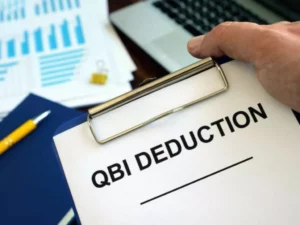A sales invoice is a report that requires payment for commodities or services provided to a shopper. It is a vital element of commercial activity since such a paper sets out all the transaction terms, allowing you to guarantee that you obtain a fair reward for your performance. Nowadays, most business documents are sent electronically, although some entrepreneurs select a post. This blog will discuss invoices, their role in the firm’s finances, and how to generate such papers.
The definition of the sales statement
An invoice is bookkeeping documentation used to record a commercial transaction. If you launch a company offering services or selling products, such papers are vital to accounting. Retail papers list and describe the services rendered or commodities sold, the sum due, the payment tool, terms, and the billing period.
If your firm issues an invoice to a shopper, there is a liability on their part and a receivable on your balance sheet. An excellent solution would be to prepare a statement after the shipment of merchandise or services.
Key aspects of sales invoices
Invoices are used to ensure various categories of retail and private sales if the transfer of goods or services in exchange for money or other benefits is provided. It is optimal paper for traders and customers as it lets you briefly describe the product, including unit expenses and shipment volumes.
Such papers inform the client about the invoice’s creation, payment amount, process moment, checklist of purchased goods, acceptable payment methods, etc. The statement also contains information on the counterparty’s actions to finish the payment.
Such an invoice is a good instance of a legitimate paper that lets you record shipped and delivered commodities for small business bookkeeping and filling out various merchant and customer economic reports.
To invoice a customer, you should know the past statement reference number associated with the new deal and examine other documents, including the sales contract, all old orders, and estimates you have earlier completed, to confirm and receive data.
Creating such papers will allow you to identify shipped goods and guarantee timely financial settlements with counterparties by clearly defined sales conditions.
The importance of sales invoice
Invoices are critical because they let you record a sale and purchase operation between a trader and a shopper. If we speak about the purchaser, this paper provides insights into what exactly was purchased and in what period. The trader collects data about what he sold and how much he received. Consider other variants of how such documents can affect your enterprise:
- Accurate accounting: having clear and timely invoices will ensure financial transactions are recorded. You’ll get quick access to valuable data, including unit cost, cash flow, and business subtotal.
- Tax calculations: these papers are essential as legal statements to verify the numbers you enter on your tax returns. The government advises that suppliers of commodities or services keep all commercial reports in a safe place when they need to verify data on tax returns.
- Legal protection: ensure you send such invoices to counterparties. It is not only proof that you have finished your part of the operation but also a detailed description of the goods sold or services provided, their full price, and payment terms. It is a reliable protection of your form from any disputes and costs of litigation.
- Marketing and budget planning: these documents allow you to control accounts payable and overall sales. They also provide valuable insight into which products and services are most in demand. You can monitor the seasonal demand for goods and create effective marketing campaigns to promote them during the peak period.
If you are trying to experience all the profits of employing invoices, we recommend optimizing the process of generating and issuing such documents. The following chapters will describe how this can be reached in more detail.
Basic types
Various invoices and other commercial documents are critical to any business. Depending on the scope of the firm, each of them can play a crucial role in sales, so it is vital to comprehend the aim of each paper and the features of its work. Consider the main documentation options:
- Standard sales invoice is used in most situations and contains valuable data, including the date of sale, customer personal information, merchandise and service descriptions, prices, and insights about the enterprise.
- A credit statement is required if the business provides a refund or discount. Such a document is sent to the customer with a negative sum, a reduction in the aggregate the shopper has to pay.
- A debit invoice is generated if the seller needs to grow the collection sum from the client; this is especially true if the hourly rate was used but the work took longer than initially planned.
- The seller issues a pro forma invoice before the buyer receives his purchase. The fundamental task of compiling it is to inform the client about the commission he will pay after obtaining the commodities.
- Recurring invoice lets you bill customers for goods and services regularly. The provider generates such documents with a specific frequency, e.g., once a month; service providers usually use them to build relationships with regular customers, including Internet service or television providers.
- A commercial invoice is required to export or import products. Customs agencies use such papers to determine import taxes and other obligatory payments. Such commercial statements act as contracts; they confirm the fact of sales. The seller is responsible for issuing documents.
Do you need help understanding what document to choose? We recommend implementing special software in your activities that will simplify the billing procedure or obtain additional information from a qualified bookkeeper.
How to design a sale document
Generating professional commercial documents is easy if you adopt an advanced program that instantly fills in blanks in invoice templates and sends them to a client’s email in just a few minutes. Creating a quality trading paper involves the subsequent acts:
- Adding the heading «Invoice» information about your firm: business insights include the organization’s name, location, phone, email, and payment details; You may also add a logo.
- Entering customer contact details include the client or enterprise name (if available), location, phone, and email.
- Identifying purchase order number: if you implement a particular program that generates business papers, you probably have the function to add an invoice number.
- Making a checklist of merchandise or services provided and briefly describing them.
- Informing about payment terms: specify available payment variants and penalties for late fees.
- Determination of the payment moment: you should indicate when the money should be in the account.
- The computing of the ultimate sum of the duty: calculate the amount the shopper must transfer, considering all taxes.
There are many various sales invoice templates available today. Once you have provided all the required information, save the document and print it for your records.
Final words
Ensure you give exact and precise invoices to your counterparties because every notification your customers get gives them an idea of your business. An outstanding reputation is key to successful sales.
BooksTime staff can assist you in setting up an invoice template that makes getting paid for your commodities and services quickly. Specialists will select programs for small businesses to assist in solving managerial objectives, including invoicing and accounting. Our software and the delegation of financial authority by financial experts will save you time and energy, which you can concentrate on growing your enterprise.


















